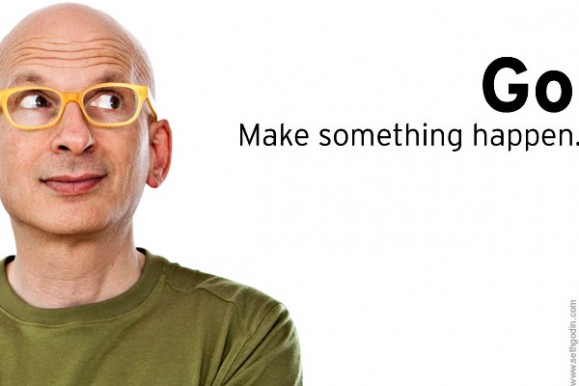
Nonprofits are all about the cause, and not about the profit (thus the name!). But sometimes we forget that the for-profit world has a lot to teach us about things like marketing strategy, customer service, and business growth. We still need to think like a business to have the impact we want to on our cause.
Seth Godin has a lot to teach us in that respect. He’s an entrepreneur, author, and marketing genius. Here are seven quick marketing lessons from his blog that you can apply to your nonprofit’s fundraising efforts.
Slogans and taglines come and go. In order to be effective, they need to tell a compelling story that lines up with your mission. “A story is something you live and connect with and come back to again and again and again.” Good slogans reflect that story and relate back to your organization’s core values. That’s why a clear and exciting call to action is essential to the success of your fundraising campaign.
2. Get criticism from the right places.
Don’t feed the trolls. You are bound to encounter some nasty critics – whether in the Twittersphere or in the comments on your nonprofit’s blog. But these are not the voices you should listen to – seek out feedback from those who care about your venture: “There are plenty of ways to get useful and constructive feedback. It starts with looking someone in the eye, with having a direct one on one conversation or email correspondence with a customer who cares.” Tune out the noise. Look for criticism that is actually constructive and will help you improve.
Impresarios are big, impressive shows or the people who put them on. A classic example would be the huge gala or benefit with celebrity guests and edgy performances. While these ventures often have a huge payoff, they also may carry a big risk. But you can also find opportunities for a small-scale impresario with the resources you already have: “The magic of the impresario opportunity is that it can start on the tiniest of scales… It’s not strategically difficult to imagine fifty ways you can use the resources you have right now to start something.” Organize a lunch outing for your best supporters, get involved with your community’s little league, or host training for college students. The possibilities are endless.
4. Use clean design and content.
Your fundraising site shouldn’t try to be everything to everyone. Too many badges, apps, and videos will dilute your message. Democracy isn’t the best method for creating excellent design – leave that to experts who know how to prune. Otherwise, you might end up with “a tacky mess.”
Hot dogs are better with mustard. This might sound like the opposite of the previous lesson, but it’s important to make an enjoyable experience for your supporters. This means “the packaging, the service, the environment, the hours, the interactions, the way it feels to tell our friends” are all extremely important features of your fundraising campaign.
Great examples of this are providing rewards, like a branded T-shirt for donations over $100, and letting donors feel involved in the campaign themselves. Let them start their own fundraising pages or track how their donation is making an impact. Don’t let this turn into clutter, but do remember, “the single most effective way to improve your impact is to do a better job of providing it.”
Getting your content to go viral is awesome. But if that tidal wave doesn’t translate into actual donations and long-term supporters, it’s not worth the hype. The best viral content is a compelling idea that spreads, or what Godin calls an “ideavirus.” As the idea spreads, “don’t try to make a sale, merely work to earn the privilege of a follow-up, the opportunity to reconnect over time.” Building long-term relationships with your supporters is key to this fundraising campaign, and the next one.
7. Look for inspiration in other industries.
Your problem most likely already has a solution – it just might not be where you would expect to find it. “Innovation is often the act of taking something that worked over there and using it over here.” Finding these real-world examples will make your obstacles less ominous. Look at industries outside of the nonprofit world for inspiration on how to deal with organizational, financial, or customer service issues. Waiting for someone in your own field to figure it out for you will take too long.
Are there any people in the business world that you draw inspiration from for your nonprofit fundraising? Tell us in the comments!




